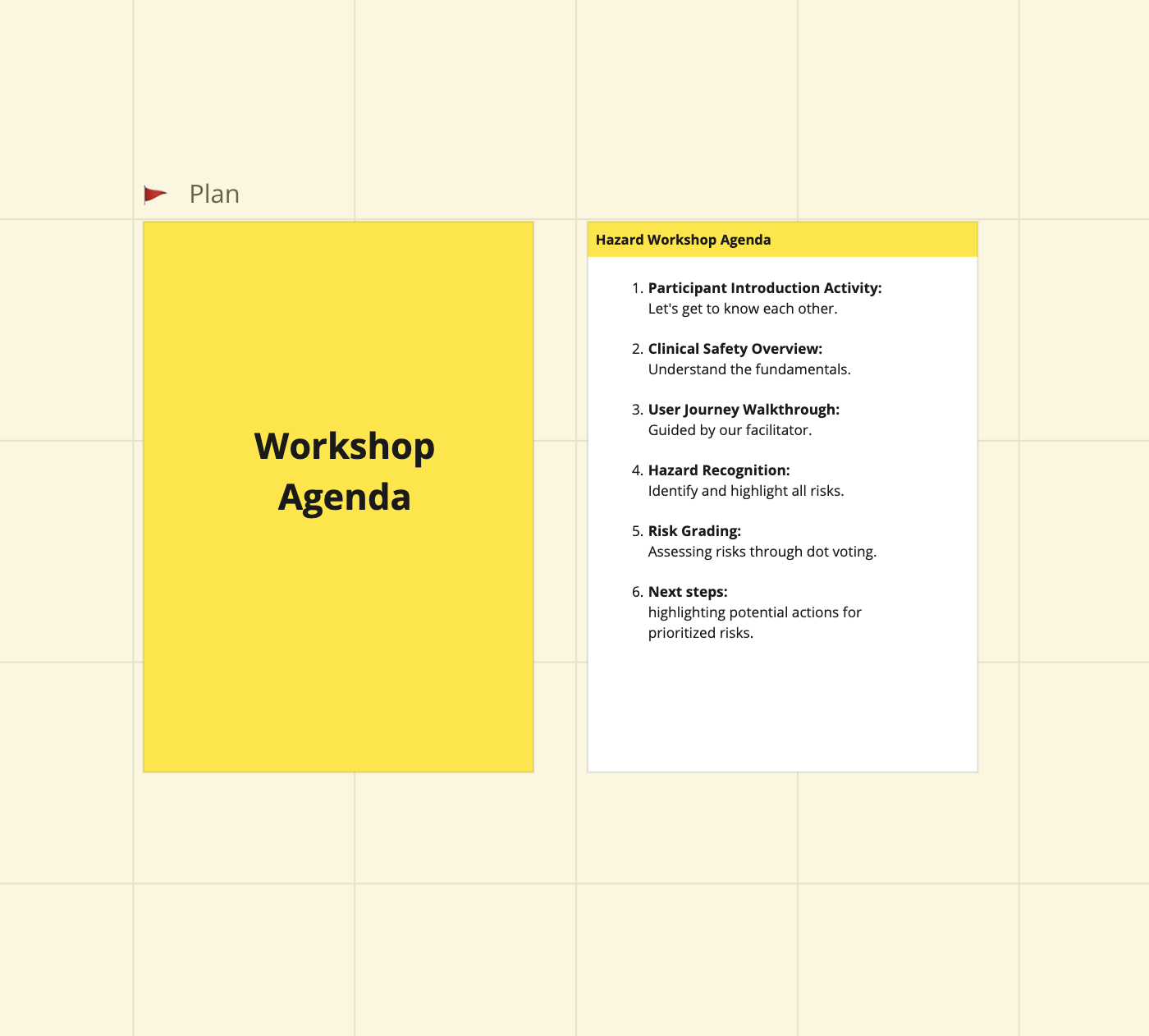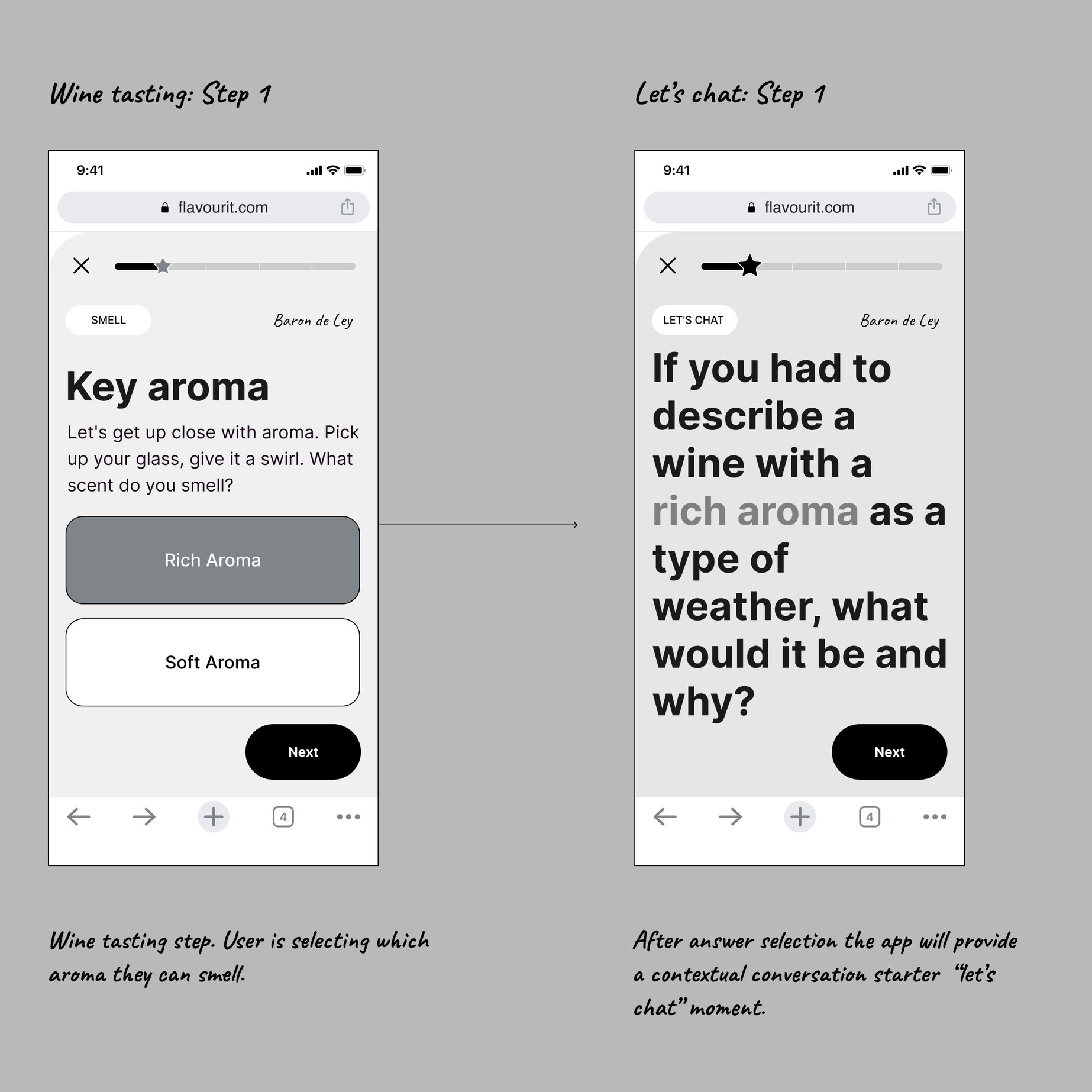Remote Risk Workshop
■
■
■ ■
Overview
Recently, I had the opportunity to lead a workshop for a promising medical technology startup. Due to NDA, I am unable to present the specific contents of the workshop. However, I believe outlining the workshop's flow could offer valuable insight. The workshop flow has been inspired by the Healthcare Conference Berlin 2023 and practices established at NHS.
Result
In the workshop, we identified critical hazards within the user journey and assessed them based on the Clinical Safety standard. This standard considers both the severity of potential harm to the patient and the likelihood of occurrence. Following the evaluation, we swiftly identified priority areas, categorizing them into two primary groups: Unacceptable Risks and Undesirable Risks. During the latter stage of the workshop, we devised strategies to address these issues effectively
Role
Wokrshop Facilitatior, UX Designer
Tools
Miro
Duration
2 weeks
Responsibilities
Designing workshop agenda, preaperation fo the workshop, aligning to team beforehand, workshop facilitation, workshop report with actionable recommendations.
Miro Board Overview
■ Start
■ Agenda
■ Warm up
■ Risk Workshop
Preparation & Objectives
■
■
■ ■
Pre-workshop activities involved:
► Designing the workshop agenda: Each Hazard Workshop may vary based on its specific focus area. The initial workshop tends to be the most complex, particularly when clinical safety assessments are lacking early on.
► Gathering all the necessary technical requirements connected to product safety.
► Ensuring the relevance and currency of the user journey: This may entail reaching out to the Research team, or collaborating with a UX Researcher to develop or adjust user journey based on existing insights to be updated.
► Preparing participants for the digital workspace: It's essential to ensure participants are comfortable with the digital tools, especially for online workshops. I typically utilize Miro for such workshops. Days prior to the session, I send out emails outlining the workshop's purpose and provide a link to the Miro board. Additionally, including a simple tutorial link can be beneficial to familiarize participants with the platform.
Workshop objectives:
► Encourage diverse perspectives through a multidisciplinary approach when evaluating the clinical safety of the user journey.
► The workshop should enable us to compile a list of hazards with the highest risk for the user and understand potential actions to address them.
► Facilitate the clinical risk assessment process to mitigate unintentional bias during risk evaluation.
Introduction
■
■
■ ■
The introduction to the workshop comprises three parts. Firstly, understanding what a Risk Workshop entails, secondly, outlining the agenda for the workshop, and thirdly, initiating a brief activity for participants to get to know each other and understand their roles in the project.
1. Overview of the Risk Workshop:
■ This ensures that all participants are on the same page regarding the purpose and objectives of the workshop.
■ It provides clarity on the methodology and approach that will be used throughout the session, establishing a common understanding among the participants.
2. Outlining the agenda
■ This sets clear expectations regarding the topics and activities that will be covered during the workshop.
■ It helps participants mentally prepare for the session and be aware of time restrictions and silent work that will be required during the workshop.
3. Superpower activity
■ This fosters a sense of humour and openess in the team.
■ It allows participants to understand their roles and responsibilities within the project, promoting overall group clarity.
Workshop
■
■
■ ■
1. Understanding Clinical Safety
■ Ensures all participants have a common understanding of clinical safety concepts, fostering effective communication during workshop.
1. Risk assasment
Equips participants with the knowledge and tools to assess and prioritize risks, enabling informed decision-making and action planning.
2. User Journey Walkthrough
Provides a chance to understand deeper user experience and the area of focus and prepare participants for the next tasks of identifying risks and rating them.
3. What if exercise
■ Through silent work participants highlight visible clinical hazards.
■ Leverages diverse perspectives and expertise within the group to uncover risks that may not have been apparent initially.
4. Risk rating
■ Facilitates the systematic evaluation and prioritizations of identified risks based on their severity and likelihood.
■ Enables team to discuss the outcomes by initially rating risks in silence by placing grading dots on the users journey we have seen before..
5. Action mapping
■ Maps out potential actions and strategies to mitigate identified risks, ensuring a proactive approach to addressing safety concerns.
■ Provides a clear roadmap for implementing risk mitigation measures, enhancing accountability and alignment among stakeholders.
Outcome
■
■
■ ■
In the workshop, we identified critical hazards in the user journey using the Clinical Safety standard, which assesses both harm severity and likelihood. We categorized these into two groups:
Unacceptable Risks: Hazards with high potential harm requiring immediate reduction.
Undesirable Risks: Risks needing attention to reduce to an acceptable level.
By planning next steps, we began addressing each high-priority risk with an initial roadmap for solutions. This approach is crucial, especially for companies in the broader health industry. For further insights on integrating Clinical safety early in design, read more here.
Case studies
☻
Case studies ☻
Flavourit App. Democratising wine tasting
UX Design | App Design
Designing for impact: helping women with daily discomfort
UX Design | UX Research | Strategy | App Design












